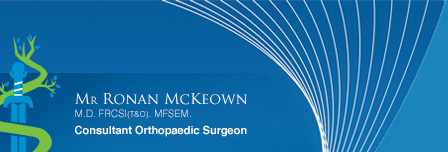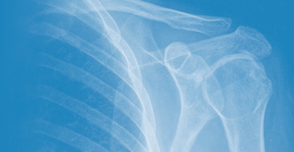|
Quick
Navigation
> General
Information
> Anterior
Instability
> Surgery
for Anterior Instability
> Posterior
Instability
Shoulder Instability:
Shoulder instability in a common problem seen by
upper limb surgeons. The shoulder girdle is a
very complex anatomical structure comprising of
30 muscles and 4 joints. In order to be able to
place the hand in as large a sphere as possible,
the biomechanical design of the shoulder is
inherently unstable.
A finely tuned balance exists
between enhanced mobility and instability. The
various anatomical components i.e. bones and
joints, muscles, ligaments etc, must all work
together in harmony to maintain this
equilibrium. Disruption to any of these parts
can tip the balance and leave the shoulder joint
unstable. Treatment of instability is thus
complex requiring both input of surgeon and
specialist physiotherapy.

Shoulder
Stabilisers
The shoulder is stabilised by both static and
dynamic restraints
Static Restraints
1. Glenohumeral Capsule
2. Joint version - 30º retro version 5º superior
version
3. Labrum - may deepen socket by 50%
-Increase surface area
contact
-Buttress / Chock block
-Attachment of ligaments
-Plunger / Suction effect
4. Shallow ball and socket - gives a little
stability
5. Negative Intracapsular Pressure
6. Wet surface cohesion
Dynamic Restraint
The Rotator Cuff functions to achieve:
1. Active compression
2. Pretensioniong of capsule
3. Proprioreception

Classification
Shoulder instability is commonly classified
into:
1. The direction of instability i.e. anterior,
posterior, multidirectional, and
2. The cause of instability (Stanmore
Classification / Bayley’s Triangle)
(a) Structural damage
(b) Pre-existing structural weakness and
therefore predisposition to injury
(c) Abnormal muscle pattern activation /
imbalance

Frequently following a structural injury, a
secondary abnormal muscle patterning problem can
develop. A dedicated physiotherapy
rehabilitation program, both pre-and
post-operatively can address these muscle
patterning issues and increase the likelihood of
a success following surgical repair.
|







